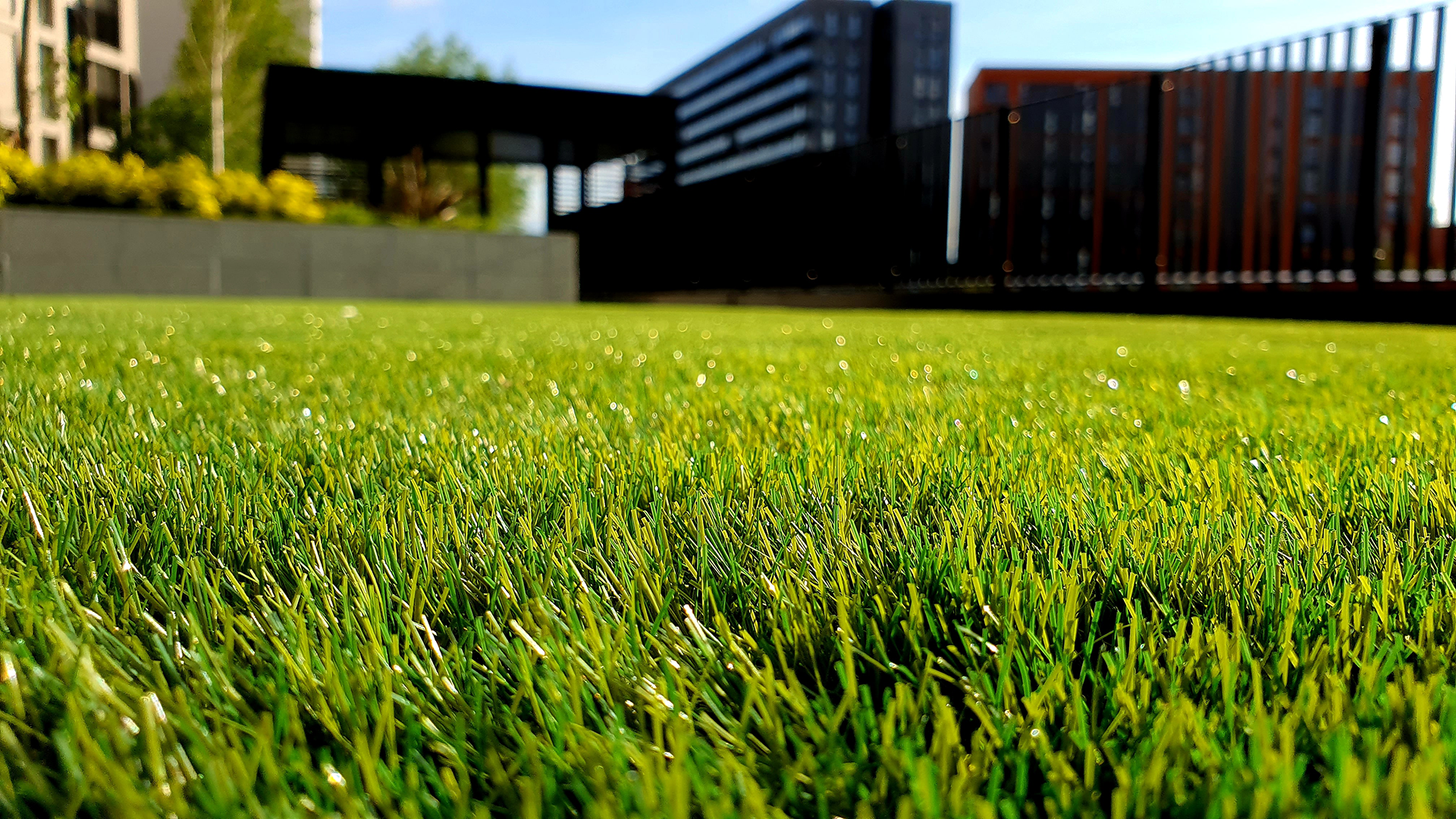When it comes to having a lush, green lawn, nothing is more frustrating than waiting for new grass to grow. You may be wondering how long it takes for new grass to grow and what you can do to make the process go faster. In this article, we will answer all of your questions about growing new grass! We’ll explain the factors that affect how long it takes for grass to germinate, and we’ll give you some tips on how to make the process as smooth as possible. Let’s get started!
Table of Contents
How long does it take for grass seed to grow?
The answer to this question depends on a few different factors, including the type of grass seed you’re using, the time of year, and the climate. Generally speaking, it takes about two weeks for grass seed to germinate. However, in some cases, it can take up to six weeks for new grass seed to sprout.
Factors That Affect Grass Germination Time
There are a few factors that can affect how long it takes for new grass to germinate. Let’s take a look at each one:
Type of Grass Seed
The type of grass seed you use will have the biggest impact on germination time. Some grasses, like Bermuda and St. Augustine, germinate very quickly (in as little as a week!). Other grasses, like Kentucky bluegrass, take a bit longer to sprout (about two weeks).
Cool vs. Warm Season Grasses
Most grasses are what are known as “cool-season grasses.” This means that they grow best in cooler temperatures (between 60 and 75 degrees Fahrenheit). We recommend cool-season grass seed for most homeowners because it is more tolerant of heat and cold than warm-season grasses.
Cool-season grasses include:
- Tall fescue Grass
- Kentucky Bluegrass
- Perennial Ryegrass
- Fine fescues Grass
If you live in an area with a warm climate, you may be better off using “warm-season grass.” These grasses are designed to withstand higher temperatures (up to 95 degrees Fahrenheit). Warm-season grasses have a shorter germination time than cool-season grasses. However, they may not be as hardy in cooler climates. Warm season lawns go dormant in the winter.
Warm-season grasses include:
- Bermuda Grass
- Zoysia Grass
- Centipede Grass
- St. Augustine Grass
- Buffalo Grass
Time of Year
The time of year also plays a role in how long it takes for grass seeds to germinate. In general, cool-season grasses do best when they are planted in the fall or spring. Warm-season grasses should be planted in the spring or summer.
If you plant grass seed outside of these recommended times, it may take longer for the grass to sprout. For example, if you plant cool-season grass in the summer, it may take up to six weeks for the seed to germinate.
Early summer and early fall are the best times to plant grass seeds. The temperatures are moderate, and there is typically more rainfall during these months, which helps to keep the soil moist.
Climate
Climate
The climate in your area can also affect how long it takes for new grass to germinate. If you live in an area with hot summers and mild winters, your grass will probably germinate faster than if you live in an area with cold winters and cool summers.
Also, cool-season grasses like rye and fescue will germinate more slowly in warm climates, while warm-season grasses like bermudagrass and zoysiagrass will germinate more slowly in cool climates.
Soil Conditions
The condition of your soil can also affect how long it takes for new grass to germinate. If you have healthy, loose soil that is rich in organic matter, your grass will probably germinate faster than if you have compacted, heavy clay soil. Grass seed germination is also affected by the pH of the soil. The ideal pH range for most grasses is between six and seven. Soil temperature also plays a role in germination rates. The ideal soil temperatures for grass seed germination are between 60 and 80 degrees Fahrenheit.
Seeding Rate
The seeding rate is the amount of grass seed you use per square foot of lawn. If you use too many grass seeds, your grass will take longer to germinate because the seeds will be competing for resources. If you use too little seed, your grass will germinate quickly but it will be thinner and less resilient. Planting grass seed at the recommended seeding rate for your lawn is the best way to ensure quick germination.
Fertilizer
If you use fertilizer when you plant your grass seed, it will probably germinate faster. However, be careful not to use too much fertilizer. Too much fertilizer can actually delay germination and damage your lawn. It’s best to use a slow-release fertilizer that is designed for new grass.
Watering
Proper watering is essential for quick germination. Make sure to water your lawn regularly and keep the soil moist but not soggy. If the soil dries out, it will delay germination. Also, be careful not to overwater your lawn. Too much water can also damage your grass and delay germination.
How to plant Grass Seed:
Now that we’ve answered the question, “How long does it take for new grass to grow?” let’s talk about growing grass. The best time to plant cool-season grasses is in the fall, while the best time to plant warm-season grasses is in the spring.
Here are a few tips on how to plant grass seed:
Step one: Test your soil
Before you plant grass seeds, it’s a good idea to test your soil. This will help you determine what type of grass seed grows best on your lawn and what amendments you may need to add to the soil.
Step Two: Choose the right seed
As we mentioned before, there are many different types of grasses. Be sure to choose the right type of seed for your lawn.
Step Three: Prepare your soil
Once you’ve chosen the right grass seed, it’s time to prepare your soil. This includes tilling the soil, removing any weeds or debris, and adding any amendments that may be needed.
Step Four: Plant the seed.
To plant grass seed, you can use a seed spreader or sow the seed by hand.
Step Six: Water regularly
Once the grass seed is planted, be sure to water it regularly. The soil should be kept moist but not saturated.
Step Seven: Mow when needed
When the grass reaches about six inches tall, it’s time to start mowing. Be sure to mow at the recommended height for your grass type.
Tips to help Grass Seed Grow and Speed Up the Germination Process
Now that you know the factors that affect grass germination time, let’s talk about how you can make the process go as quickly as possible. Here are a few tips:
Choose the right type of grass seed for your area
If you’re not sure which type of grass is best for your area, ask your local nursery or Cooperative Extension office. Planting seeds that are native to your area will improve the chances of success.
Prepare your soil before you plant
Loosen the soil and mix in some organic matter to help the seeds germinate quickly. The best tools for this job are a garden fork and a rototiller.
Plant your seed at the correct rate
Use a seed spreader to evenly distribute the seed over your lawn. If you plant too many seeds, they will compete for resources and take longer to germinate. If you plant too few seeds, your lawn will be thinner and less resilient.
Water regularly
Keep the soil moist but not saturated. Water in the morning so the grass has time to dry out before nightfall. New grass seedlings need at least an inch of water per week.
Mow when needed
Mowing helps the grass to grow thicker and healthier. Be sure to mow at the recommended height for your grass type.
FAQs
Q: What is the best time to plant grass seed?
A: The best time to plant cool-season grasses is in the fall, while the best time to plant warm-season grasses is in the spring.
Q: How often should I water my lawn?
A: Water your lawn as needed to keep the soil moist but not saturated.
Q: How often should I mow my lawn?
A: When the grass reaches about six inches tall, it’s time to start mowing. Be sure to mow at the recommended height for your grass type.
Q: What do I do with my existing lawn?
A: You will want to mow it short, about an inch or two above the soil. Then you can either compost it or till it into the soil to help improve drainage and aeration. Be sure to remove any rocks, roots, or other debris before planting grass seed.
Q: Grass seedlings are coming up, but they’re not very strong. What can I do?
A: Make sure you are watering regularly and the soil is moist but not saturated. You may also want to fertilize your lawn with a high-quality fertilizer to help the grass seedlings grow stronger.
Q: Grass seeds grow, but they’re not very green. Why is that?
A: It could be a number of things, but the most likely reason is that the grass isn’t getting enough nitrogen. Be sure to fertilize your lawn with nitrogen-rich fertilizer to help the grass grow greener.
Summary
Some key factors that affect the length of time it takes for grass to germinate include:
- The type of grass seed
- The quality of the soil
- The rate at which the seed is planted
- How often the soil is watered
- The climate
To help grass seeds grow quickly and successfully, be sure to:
- Choose the right type of grass seed for your area
- Prepare your soil before you plant
- Plant your seed at the correct rate
- Water regularly
- Mow when needed
Now that you know how long it takes for new grass to grow, as well as the factors that affect grass germination time, you can be sure to plant your grass at the right time and take care of it properly. With a little patience and effort, you’ll have a beautiful lawn in no time!





